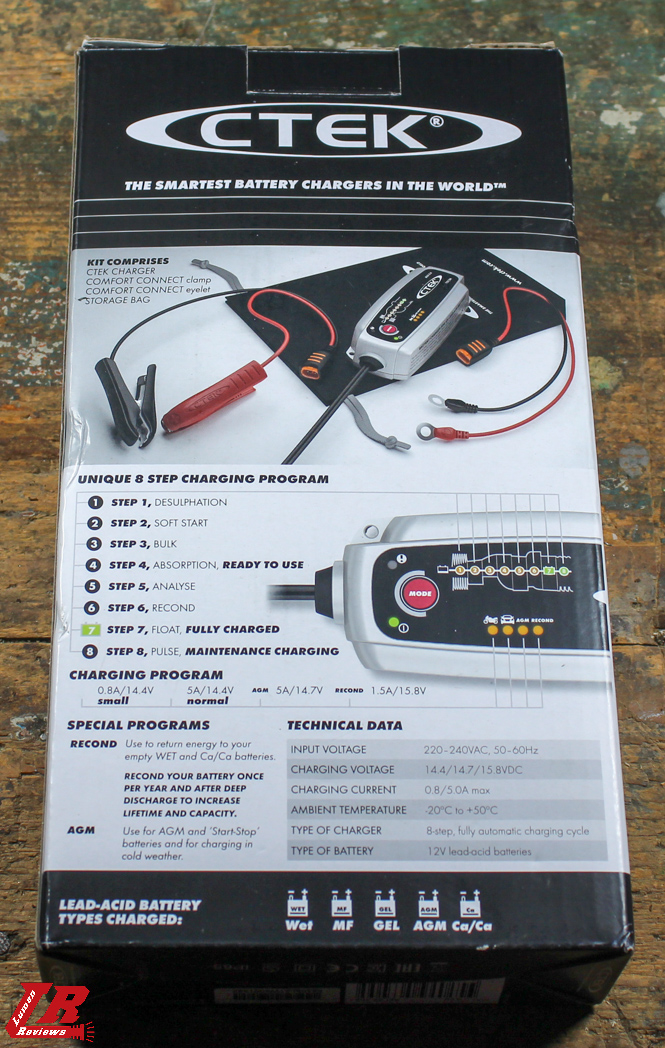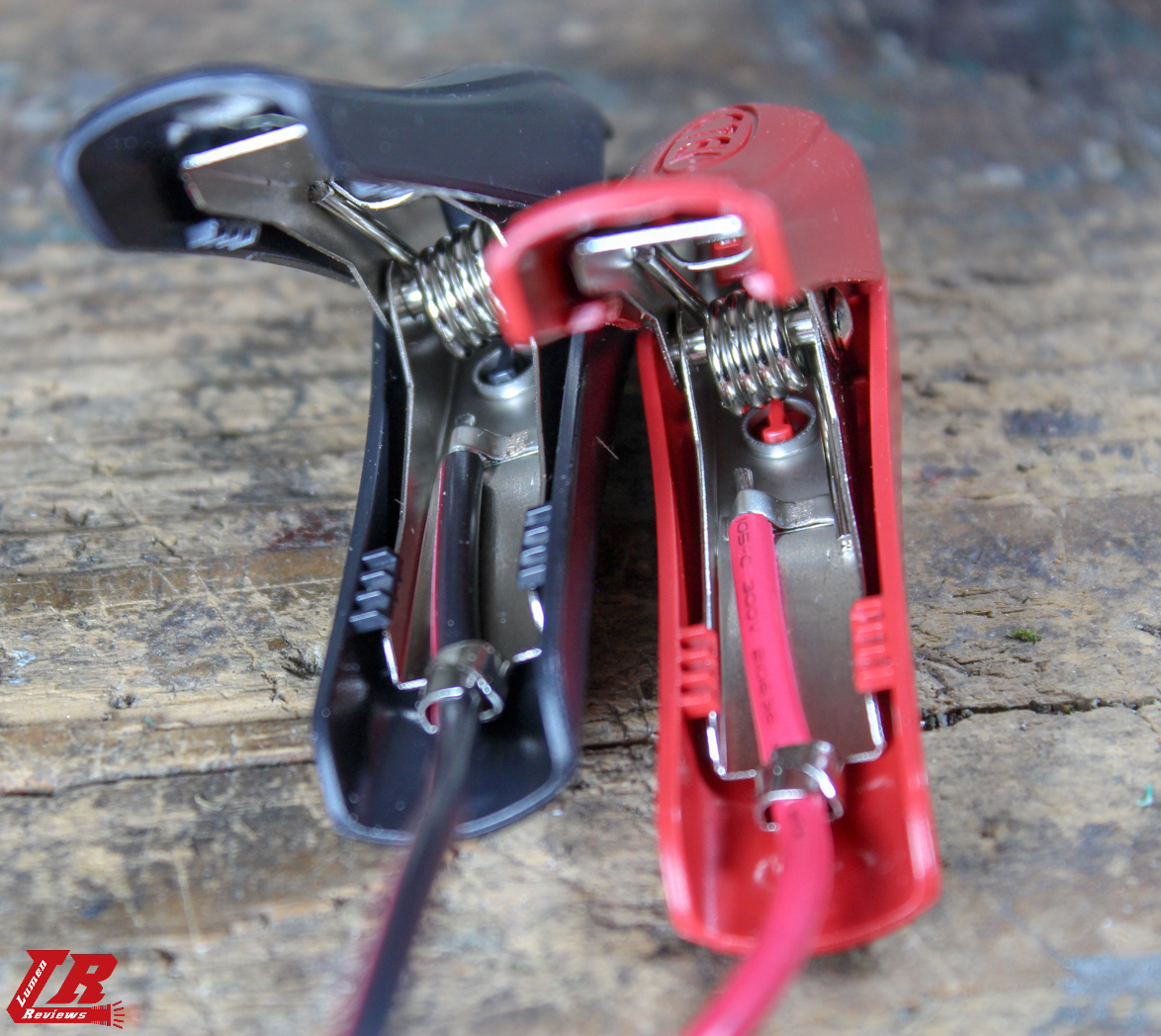The Ctek MXS 5.0 is one of the most popular lead battery maintainer-charger.
I have almost no knowledge about electronic, however, I’ve been using flashlights, batteries and chargers for 10+ years as a consumer. So, in this thread I’ll give you my honest opinion on this product as a user, considering that I bought it more than 5 years ago, and I have been using it since.
When it comes to car batteries (or, more in general, lead batteries), the 2 main kind of products available are battery charge maintainer and battery charger.
The first kind usually applies a small charging current, that is usually recommended to apply if you plan to store a lead battery for a long time without using it, and making it ready to be used in the future. These products usually apply a rather slow charging current in order to maintain the charge of the lead battery, compensating both the self-discharge rate, and the parasitic drain due to the electronics that might be connected to the battery. A battery might be left connected to this device for several months in a row, like a motorbike battery in the winter period, or a snowmobile battery in summer period.
The second kind applies a higher charging current, in order to charge a lead battery that has been significantly discharged.
The differences between these devices are not only the charging current rate, but also the electronic regulating the different algorithms that control charging and maintaining the battery.
As a niece, there are also dedicated products that have built in recovery – desulfating features.
In the last years, products that incorporate all the above features have reached the market.
I believe the most famous one is the MXS 5.0, object of this thread.
The MXS 5.0 is able to charge lead battery, either big or small, and has a recovery mode. The kind of lead batteries supported are: WET, EFB, MF, CA/CA, AGM and GEL.
The MXS 5.0 comes in a cardboard box, with a manual, a sleeve bag, an eyelet cable and a battery clamp cable.



The MXS 5.0 has a plastic body with an electronic switch to change between the modes, and a series of status LEDs. To power it, you connect it to the power outline via this Schuko plug.

The cable that exits form the other side of the MXS 5.0, has a quick disconnect feature, with o-ring to guarantee certain degree of waterproofness and avoid accidental disconnection by pulling. On every end of these cables there’s a rubber stopper (my father removed all of them for saving time when connecting them, you can see it well in the eyelid cable pic.



The cable with battery clamps. The clamp’s spring has some tension to keep them firmly connected to the battery terminals. It is easy to distinguish between positive and negative connector (both colour and writing).





The eyelit cable

In case your battery terminals are hard to reach, or you want an easier, quicker, more stable connection, you can screw permanently these eyelets on your battery terminals, and when desired, connect this cable to the CTEK. Beside motorbikes, or other devices where reaching the battery means taking apart several pieces, I found this way to be the best for people that are not keen on electronics or an engine bay.
Several other cable accessories are available for purchase.
The function is quite simple: you plug the CTEK into the wall outlet, then you connect it to the battery, and select the charging parameter using the electronic switch.
The charging settings are clearly indicated in the bottom part.
Switching between the car and the bike symbol is how you tell the CTEK how small or big the battery is, and so, how much is the max current (0,8 or 5A).
The AGM symbol is for AGM batteries.
The recond symbol is for recovering the batteries with a special algorithm.

At each press of the switch you will scroll through the possible configurations, going from just car LED on (meaning charge a car battery that is non-AGM), to bike LED + AGM + recond on (either recovering a small AGM battery)



After you set your desired parameters, the process will begin after a few seconds.
The Process is composed of 8 parts, for everyone there is a status LED: 6 oranges ones and 2 greens ones.
1 Desulphation, 2 Soft start, 3 Bulk (charge up to 80), 4 absorption (battery charged 100), 5 analyse (testing if the battery is holding the charge), 6 recond (reconditioning function for deeply discharged batteries, skipped if not selected), 7 flat (mantaining the maximum charge), 8 pulse (maintaining storing charge).
Once the process is completed, the MXS 5.0 will lower its current and to the maintenance charge (step 8). This means that the battery can be left connected for a long period of time without any risk.
There were several points that drove me to the CTEK MXS 5.0 model in particular:
- Ease of purchase
- Ease of use
- Capability to charge car and motorbike batteries
- Relatively fast charging for car batteries (consider that here in Italy and Europe we tend to have smaller engines compared to the ones you have in the US, and so we have smaller average batteries)
- Maintaining and recovering feature.
This is the kind of device that in my family was used
- by me quite regularly, often leaving my batteries always connected when not in use for a few days;
- by my parents and friends in “emergency”, when they realise they left the car key half turned, or with the headlights on, or with just a battery that could feel weak.
When using a vehicle, I pay attention to starting it without turning the “current eaters” (AC, heating, lights, radio, rain wipers), and the same when turning it off.
But not everyone pays attention, and often the victims are old, cheap, batteries.
Sometimes it was also a matter of an alternator not charging it so efficiently, in addition to the above problems.
So, the MXS 5.0 came to the rescue several times.
Please note that the MXS 5.0 does not perform miracles.
In the case of a good battery that is low on charge it can recharge it fully; but old, beaten, exhausted batteries can’t be saved.
Thus said, the MXS 5.0 made often the difference between being able to bring the car to the repair shop to get a new battery, and needing to pay for a tow truck.
A few times, the car was parked in a position where it wasn’t even possible to jump start it with another car.
The MXS 5.0 has a 5 years warranty from the manufacturer.
Unfortunately, my sample started showing problems after 3 years. The problem consisted in the electronic switch not working, in fact, at the early stages of the problem, it would require a strong, angular press to be registered, then 5-10 pushes to register a single one.
My mistake was reading online that this was a common problem among the Ctek owners, and that a quick fix was obtainable by taking the charger apart and applying some contact cleaner at the switch, or entirely replacing it with a new one.
As time went on, the matter got worse and it wasn’t even possible to make the charger acknowledge a single push of the switch, no matter how many minutes I tried.
Having waited too much, mistake on my part, the warranty expired.
I tried to take it apart, but I found out that the procedure I found was valid for older models, held together by screws.
The current ones are pressure fit with plastic parts, and an attempt of taking mine apart resulted in breaking the plastic body.
The MXS 5.0 worked fine for me, but had some limitations:
- the body is bulky
- requires a schucko plug
- very short cables, often requiring extension cords when just 50 cm more would have been fine
- lack in lithium phosphate battery support.
Since my father found himself at ease with the CTEK MXS 5.0, accustomed to using it for so many years, I got him a new one. I will not make the same mistake again, I will check on the switch periodically and use the warranty at the first problem.
Meanwhile, I decided to get something else for myself. But that is for next review.